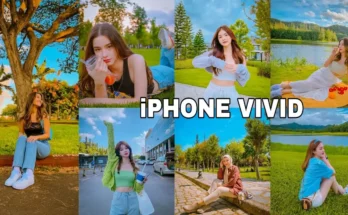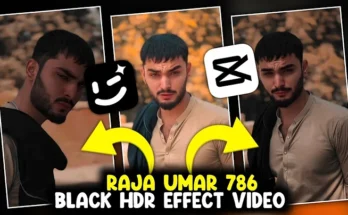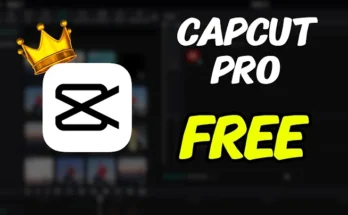Urdu poetry, with its profound history and intricate emotional tapestry, occupies a cherished space in the hearts of many aficionados. In today’s digital epoch, the art of weaving these poetic expressions into visually captivating videos has gained significant momentum. Whether driven by personal expression, the allure of social media, or professional endeavors, the craft of editing Urdu poetry videos has blossomed into a pivotal creative avenue. This guide delves into the nuances of editing Urdu poetry videos, spotlighting the tools and techniques that elevate the craft, the features of popular software, and a detailed analysis of various methods’ strengths and limitations. Furthermore, we’ll compare alternative editing solutions and conclude with actionable insights to aid in crafting the perfect Urdu poetry video.
What is Editing Urdu Poetry Videos?
Editing Urdu poetry videos is the art of merging text, images, and, occasionally, soundscapes to curate a visually stimulating presentation of Urdu poetry. These videos range from simple text overlays on images to more sophisticated productions that include dynamic transitions, animations, and immersive sound effects. The creative process enables artists to accentuate the verses, underscore emotional resonance, and amplify the poetic impact through visual storytelling.
The Art of Editing Urdu Poetry Videos
Urdu poetry videos are frequently shared across social media platforms such as YouTube, Instagram, and TikTok, where they strike a chord with audiences who hold the beauty of the Urdu language and its rich poetic traditions in high regard. Crafting these videos demands a combination of technical expertise and a deep appreciation for the essence of the poetry, ensuring that it resonates with the audience on a visceral level.
How Editing Urdu Poetry Videos Works
The process of editing an Urdu poetry video typically involves the following steps:
1. Selecting the Poetry
Verse Selection: The initial task involves choosing the poetry that will take center stage in the video. This could range from a well-known ghazal to a nazm or even original verses. The poetry’s tone and theme set the stage for the visual journey.
2. Choosing Visuals
Images and Video Clips: Depending on the mood evoked by the poetry, suitable visuals are chosen. These could encompass nature scenes, abstract visuals, or even thematic video clips that complement the verse’s emotions.
3. Incorporating Text
Text Overlay: Once the poetry is selected, the verses are introduced as text overlays within the video. This step involves selecting an appropriate font, size, and color scheme to maintain readability and aesthetic appeal. Text Animation: To elevate the dynamism of the video, text animations like fading, sliding, or custom transitions can be applied, adding depth and movement.
4. Adding Background Music
Audio Selection: A fitting background track, typically a delicate instrumental piece or a traditional Urdu melody, is chosen to heighten the emotional experience of the poetry. Synchronization: The selected music is carefully synchronized with the poetry, creating a harmonious balance between the auditory and visual elements.
5. Enhancing Visuals
Filters and Effects: Visual elements like filters, transitions, and special effects can be layered onto the video to enhance its aesthetic appeal. Color grading, blurring effects, or adding vignette filters can intensify the mood of the video.
6. Finalizing the Video
Review and Export: The final phase involves meticulously reviewing the entire video, making necessary adjustments, and exporting it in the desired format and resolution.
Key Features of Editing Urdu Poetry Videos
Editing Urdu poetry videos requires specialized features in editing software to ensure that the final product is both emotionally evocative and visually striking. Here are the key features to consider:
1. Text Editing Tools
Font Customization: The software should offer a broad selection of fonts, particularly those that support Urdu script, enabling seamless integration of poetry into the video. Text Animations: Features that allow dynamic text animations, such as fading, sliding, or zooming, add a polished touch to the video.
2. Visual Editing Tools
Layering and Masking: Advanced tools for layering images and masking give the editor more creative control over how text and visuals interact. Filters and Color Grading: The ability to apply filters and color grading allows the editor to set the desired mood and tone for the video.
3. Audio Editing Tools
Music Integration: The software should enable smooth integration of background music, offering volume adjustment and syncing capabilities. Sound Effects: Adding subtle sound effects can significantly enhance the atmosphere, intensifying the emotional depth of the video.
4. Transition Effects
Smooth Transitions: A variety of transition effects can ensure a seamless flow between scenes, maintaining the visual rhythm. Customizable Transitions: More advanced software may provide the ability to craft and tailor transitions to match the thematic essence of the poetry.
5. User Interface
Ease of Use: The interface should be intuitive, especially for beginners, making navigation simple without feeling overwhelmed. Multilingual Support: Integration of multilingual support, including Urdu, ensures that users can work effortlessly with the script.
6. Export Options
Multiple Formats: The software should allow for the exportation of videos in various formats and resolutions, such as HD or 4K, depending on the platform of choice. Social Media Integration: Direct sharing options to popular platforms like YouTube, Instagram, and TikTok streamline the distribution process.
7. Mobile Editing
App Availability: Mobile apps offer the flexibility to edit videos on the go, which is ideal for creators seeking convenience. Cloud Storage Integration: Syncing projects to cloud storage guarantees access to your work across multiple devices.
Pros of Editing Urdu Poetry Videos
| Pros | Description |
|---|---|
| Creative Expression | A unique avenue for sharing Urdu poetry in a personalized, artistic way. |
| Enhanced Engagement | Incorporating visual and audio elements increases audience interaction. |
| Wide Reach | Sharing on social media expands the reach to a global audience. |
| Customization | A high degree of customization allows for artistic freedom. |
| Accessibility | Mobile apps facilitate editing from virtually anywhere. |
Cons of Editing Urdu Poetry Videos
| Cons | Description |
|---|---|
| Learning Curve | Mastering editing tools and techniques can be time-intensive. |
| Time-Consuming | Creating detailed videos can be a lengthy process, especially for intricate projects. |
| Software Costs | Professional editing software may be expensive. |
| File Size | High-resolution videos can result in large file sizes, complicating uploads. |
| Technical Issues | Potential technical glitches, such as crashes, may arise with complex projects. |
Alternatives for Editing Urdu Poetry Videos
Several alternatives exist for editing Urdu poetry videos, each offering distinct features, benefits, and drawbacks. Below is a comparison:
| Alternative | Key Features | Pros | Cons |
|---|---|---|---|
| Adobe Premiere Pro | Professional tools, comprehensive text options, audio syncing | Industry-standard, highly customizable | Expensive, steep learning curve |
| Filmora | User-friendly, text animations, audio editing | Affordable, easy to use | Limited advanced features, watermark in free version |
| KineMaster | Mobile-friendly, multi-layer editing, audio filters | Convenient, quick edits | Limited desktop functionality, ads in free version |
| InShot | Simple interface, social media integration, basic text editing | Great for beginners, free version available | Limited advanced editing tools, watermarked exports |
| PowerDirector | 4K export, customizable transitions, audio effects | Powerful mobile app, wide format support | Premium subscription required for some features, complex UI for beginners |
Conclusion and Verdict on Editing Urdu Poetry Videos
Editing Urdu poetry videos offers an evocative way to channel the depth and beauty of Urdu literature into visual storytelling. With the right tools and techniques, creators can produce compelling videos that speak to both the heart and the eyes. Although the process may be time-intensive and involve a steep learning curve, the results can be deeply fulfilling.
The benefits of editing these videos, such as fostering creative expression and increasing engagement, outweigh the challenges—particularly when using software suited to one’s skill level and project requirements. Whether opting for professional-grade tools like Adobe Premiere Pro or more accessible options such as Filmora or KineMaster, the path to creating stunning Urdu poetry videos is full of potential.
In conclusion, whether you are a poet eager to share your work, a content creator seeking to broaden your audience, or simply an admirer of Urdu poetry, editing videos in this genre promises a rewarding and creative pursuit.
FAQs on Editing Urdu Poetry Videos
- What software is best for editing Urdu poetry videos? The best software depends on your expertise. Adobe Premiere Pro suits professionals, while Filmora and KineMaster are ideal for beginners.
- Can I edit Urdu poetry videos on my phone? Yes, mobile apps like KineMaster and InShot offer robust editing features that allow you to create Urdu poetry videos directly on your smartphone.
- How do I add Urdu text to my videos? Most video editing software supports Urdu script. You can easily add Urdu text by choosing the appropriate font and typing the poetry directly into the video.
- What are some good background music options for Urdu poetry videos? Traditional instrumental music, soft Urdu melodies, or nature sounds can beautifully complement the emotional tone of Urdu poetry videos.
- Is there a free tool for editing Urdu poetry videos? Yes, tools such as InShot and the free version of KineMaster provide essential editing functionalities that are sufficient for creating basic Urdu poetry videos, though they may include watermarks in the final output.




